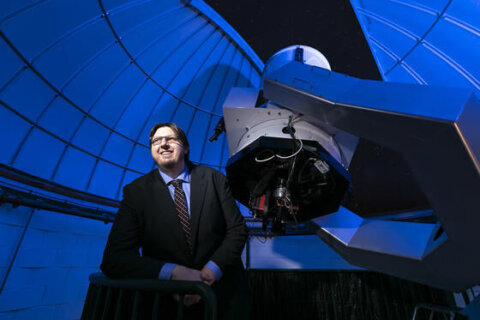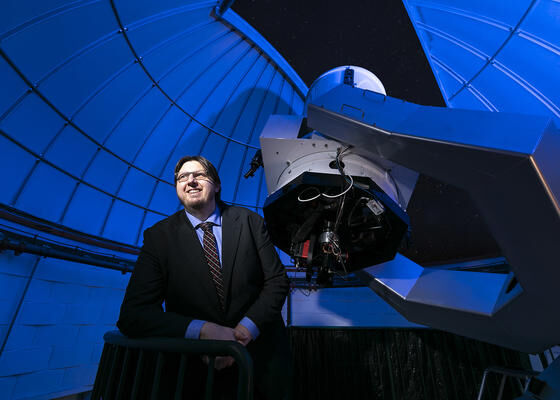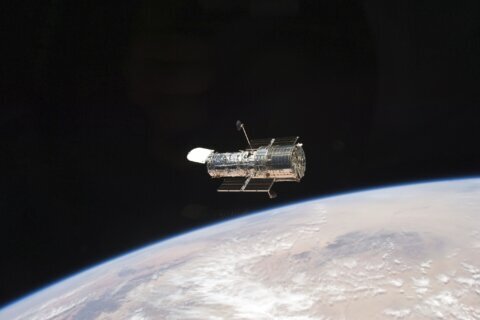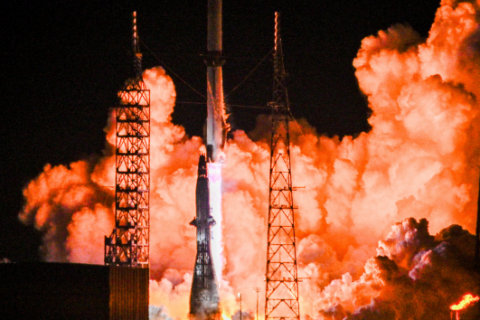
The answer to some of life’s most fascinating questions could eventually be answered with help from a NASA mission that George Mason University has been tapped to lead.
The Fairfax County, Virginia, college will build and launch an “artificial star” into orbit. The small satellite will be equipped with solar panels and a set of lasers that astronomers will be able to see from telescopes on the ground.
“We’ll have devices on the spacecraft, watching how much light those lasers put out. And then we’ll see how much that light reaches our telescopes. We’ll be able to measure to a level that’s never been measured before, how bright the things are that we’re looking in the sky next to it,” GMU associate professor of physics and astronomy Peter Plavchan said.
Plavchan is serving as the principal investigator for the $19.5 million Landolt NASA Space Mission. Using the light the mission aims to provide, scientists will be able to calibrate telescopes to more accurately measure the brightness of stars.
So why does that matter? Plavchan said it will advance research in various areas and could even help lead to the discovery of another habitable planet. More than 5,000 planets that orbit a star have been discovered over the past 30 years.
“We’re trying to find Earth 2.0. We want to find the ‘Goldilocks planet’ — the planet that’s not too hot, not too cold, just the right size and mass that if it had liquid surface water and an atmosphere, it could support life as we know it, like we have here on the Earth. Well, if we want to know whether or not that planet’s too hot or too cold, too big or too small, we need to know precisely how much light that star is putting out,” he said.
The artificial star won’t be visible to the naked eye. It will be placed 22,236 miles above Earth so that it goes around the Earth once a day and will always be in the same part of the sky.
The spacecraft’s payload is only around the size of a shoe box and is scheduled to go into orbit in 2029.
“This is an incredibly exciting opportunity for George Mason and our students,” associate professor Piotr Pachowicz said in a news release. “Our team will design, build, and integrate the payload, which — because it’s going very high into geostationary orbit — must handle incredible challenges.”
WTOP’s Dick Uliano contributed to this report.
Get breaking news and daily headlines delivered to your email inbox by signing up here.
© 2024 WTOP. All Rights Reserved. This website is not intended for users located within the European Economic Area.









